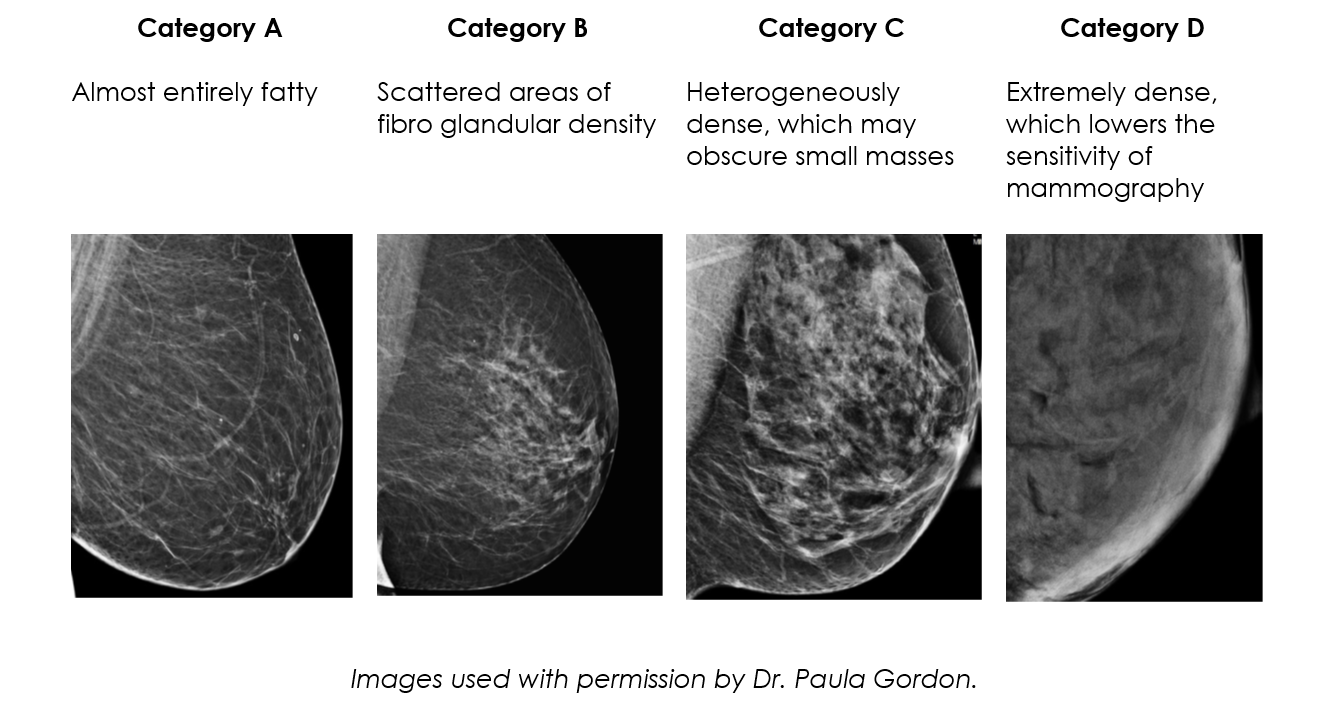Breast Density and Screening Mammograms
What are dense breasts?
Dense breasts refer to the appearance of breast tissue on a mammogram. Since breast tissue comprises glandular, connective, and fatty tissue, breast density refers to the ratio of each type within the breast. Dense breast tissue has more glandular and connective tissue than fatty tissue.
Why is it important to know about breast density?
Dense breast tissue and cancer both display as white on a mammogram; this can make it harder for the radiologist to read the images. Therefore annual screening mammograms are recommended for those in the highest dense breast category.
How is breast density determined?
By mammogram images. It is not something that can be seen or felt.
The radiologist grades density during the reporting of the mammogram using the Breast Imaging Reporting and Data System (BI-RADS), which includes four categories:
- Category A – almost entirely fatty
- Category B –scattered areas of fibro glandular density
- Category C –heterogeneously dense, which may obscure small masses
- Category D –extremely dense, which lowers the sensitivity of mammography
What does the Screening Program for Breast Cancer do for women with dense breasts?
If your screening mammogram images show your breast tissue is extremely dense (Category D), you will be invited back the next year for a screening mammogram.
Screening every year will help detect small changes in the breast and increase the chance of finding any worrisome changes sooner.
Where can I find my breast density?
All breast density categories are reported on the mammogram radiology reports available on MySaskHealthRecord, through your healthcare provider, or through the screening program.
Your healthcare provider also has access to your report.
Does a women’s breast density change over time?
Yes. Dense breasts are common, and breasts tend to become less dense as women age.In addition, breast density may change from screen to screen because the amount of dense tissue may change over time.
What can I do if I have dense breasts?
Breast density is one of several risk factors for breast cancer. Women with breast density should discuss all of their breast cancer risk factors with their healthcare providers.
This discussion will help determine if supplemental testing is required. If additional tests are required, this is arranged by your healthcare provider and not the screening program.
Know the normal look and feel of your breasts, and call your healthcare provider if you notice any changes, even if you just had a mammogram.
Below are images that show the breast density categories:

Learn More |


